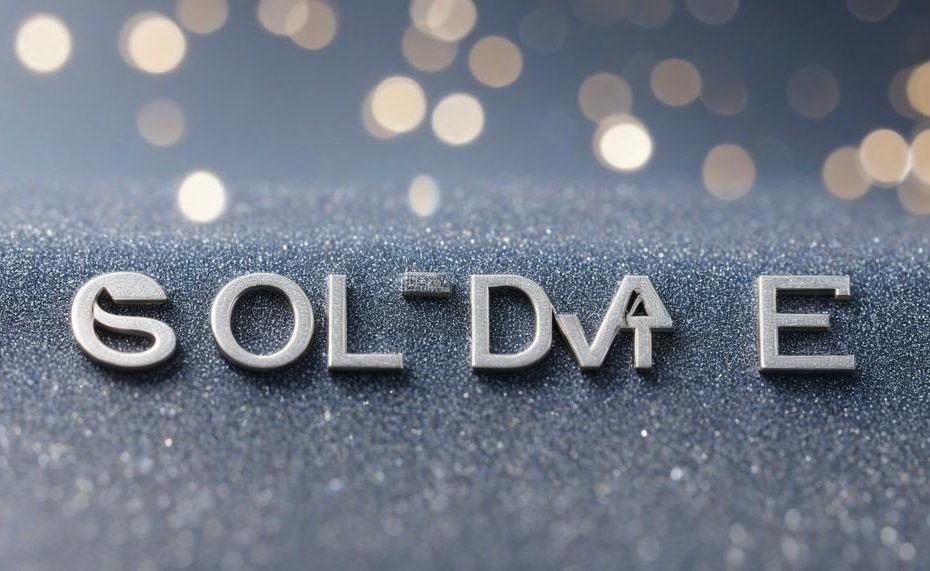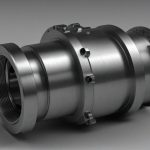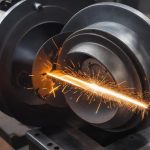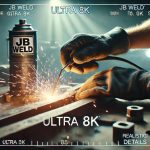Whether you’re a seasoned professional in the jewelry industry, an avid hobbyist in electronics, or somewhere in between, understanding the applications of silver solder opens up a realm of possibilities.
In this post, we’ll explore the myriad ways in which this remarkable material is used, shedding light on its importance across various industries. From creating enduring jewelry pieces to ensuring robust electrical connections, silver solder plays a pivotal role in crafting items that stand the test of time.
Our journey will take us through the art and science behind silver soldering, offering insights that promise to both educate and fascinate.
Here’s a sneak peek of what we’ll cover:
- Jewelry Making: Discover how silver solder brings designs to life, ensuring beauty and durability.
- Electronics: Learn about its critical role in establishing reliable electrical connections.
- Art and Sculpture: Find out how artists utilize silver solder to create stunning pieces.
- Repair Work: See how silver solder can be a game-changer in fixing various items.
Prepare to be captivated as we delve into the applications of silver solder, where precision meets creativity. Let’s embark on this enlightening journey together, ready to uncover the secrets behind this indispensable material.
Contents
- 1 What Is Silver Solder Used For?
- 2 The Composition of Silver Solder and Its Uses in Jewelry-Making
- 3 How Silver Solder is Used in Plumbing and Electrical Work
- 4 Different Grades and Flow Temperatures of Silver Solder for Specific Applications
- 5 The Process of Silver Soldering: Techniques and Equipment Required
- 6 Advantages of Using Silver Solder Compared to Regular Solder
- 7 Aesthetic Qualities of Silver Solder: Shiny Finish and Malleability
- 8 Conclusion
What Is Silver Solder Used For?
Silver solder is a versatile alloy, widely cherished for its admirable properties in welding, where it plays a pivotal role in fabricating robust, reliable joints across a plethora of industries. Below, we delve into its primary applications and the uniqueness it brings to the welding world.
Key Uses and Benefits
Jewellery Making:
Silver solder is indispensable for creating and repairing exquisite pieces. Its capacity to bond precious metals like gold and silver without altering their aesthetic appeal is unmatched.
The alloy facilitates the fusion of intricate components, enabling artisans to craft complex, delicate designs with precision.
Plumbing and HVAC Systems:
For plumbing applications, silver solder is the go-to choice for ensuring leak-proof seals in pipes and fittings. Its superior strength and melting point compared to regular solder make it ideal for high-pressure water and gas lines, safeguarding against leaks and potential damage.
Electrical and Electronics Repair:
In the realm of electronics, silver solder’s exceptional electrical conductivity is crucial. It’s used to mend circuit boards and wires, ensuring optimal electrical flow and heat dissipation, a must for maintaining the functionality and longevity of electronic devices.
Automotive and Aerospace:
Its application extends to manufacturing components for luxury cars and aerospace equipment.
The durability and corrosion resistance of silver solder joints contribute to the safety and longevity of critical components in these high-performance sectors.
Musical Instruments and High-End Appliances:
The aesthetic and functional qualities of silver solder make it a preferred choice in crafting musical instruments and luxury kitchen appliances. It offers both the resilience required for daily use and the polished finish that complements high-quality craftsmanship.
Why Silver Solder?
| Property | Advantage | Application |
| Lower Melting Point | Less Heat Damage to Components | Jewellery, Electronics |
| High Strength | Durable, Leak-Proof Joints | Plumbing, Automotive |
| Excellent Conductivity | Efficient Electrical Repairs | Electronics |
| Corrosion Resistance | Long-lasting, Clean Finishes | Plumbing, Appliances |
| Aesthetic Quality | Seamless Blends with Metals | Jewellery, Musical Instruments |
The tapestry of uses for silver solder in welding underscores its indispensability in both functional and artistic domains. Its blend of mechanical strength, thermal and electrical conductivities, alongside aesthetic charm, earmarks it as a preferred material for professionals seeking precision, durability, and beauty in their work.
The Composition of Silver Solder and Its Uses in Jewelry-Making
Silver solder, a linchpin in the artistry of jewelry-making, boasts a composition that melds durability with aesthetic appeal, a vital aspect for craftspeople aiming to create enduring and captivating pieces. Its core, comprising a minimum of 67% silver, ensures the resulting jewelry not only shines with an allure but also meets the stringent standards required for sale, especially in pieces bearing hallmarks of authenticity.
| Type | Silver Content | Melting Point |
|---|---|---|
| Extra Easy | ~65-70% | Lowest |
| Easy | ~70-75% | Low |
| Medium | ~75-80% | Moderate |
| Hard | ~80-85% | Highest |
In the craft of jewelry-making, silver solder not only mends breaks but also fuses components with a finesse that preserves the integrity of the design. The choice among Extra Easy, Easy, Medium, and Hard types hinges on their melting points, dictating their application across various stages of assembly. To thwart the risk of undoing previous work, artisans commence with the Hard solder, progressing to the lower-melting counterparts for subsequent joins, a meticulous strategy that ensures the piece’s resilience and beauty.
The process, while intricate, demands a suite of tools—flux to cleanse the metal surface, tweezers for precise placement, heat absorption paste to protect delicate areas, and a solder pick for manipulating the solder. Such meticulous preparation paves the way for a fusion that’s not only physically robust but aesthetically seamless.
Safety, a paramount concern, necessitates precautions like wearing a respirator and ensuring a well-ventilated workspace to mitigate the hazards of fumes and heat.
How Silver Solder is Used in Plumbing and Electrical Work
Absolutely, silver solder shines in plumbing and electrical work for its robust properties and versatility. Here’s how it makes a difference:
Plumbing Applications
| Joining Copper Pipes | It’s the go-to choice for sealing copper pipes owing to its strong bond that withstands water pressure and temperature variations. |
| Corrosion Resistance | Silver solder prevents corrosion, a common menace in plumbing systems, thereby extending the lifespan of pipe connections. |
| Aesthetic Joints | For fixtures on display, its clean and almost invisible joints make it a preferred option for aesthetically pleasing finishes. |
Electrical Applications
| High-Temperature Endurance | Its high melting point means it’s ideal for components like transformers or motors that generate heat, ensuring connections stay intact. |
| Enhanced Conductivity | Being a highly conductive metal, silver solder ensures a seamless flow of electricity through joints, reducing resistance. |
| Durable Connections | The strength of silver soldered joints minimizes the risk of cracks or breaks under stress, essential for reliable electrical circuits. |
The Benefits
- Strength: Its ability to create durable bonds that can bear constant stress and pressure is unmatched. This is crucial in plumbing where the integrity of water connections is paramount, and in electrical work where secure connections are vital for safety and functionality.
- Resistance to Corrosion: Silver’s natural resistance to corrosion protects against the weakening of joints over time. This prolongs the life of plumbing and electrical systems, ensuring they remain efficient and safe.
- Aesthetic Quality: The neatness of silver soldered joints is not just about looks; it’s also about ensuring minimal disruption on surfaces, which is particularly beneficial in visible areas.
In essence, silver solder brings reliability, efficiency, and beauty to plumbing and electrical work.
Different Grades and Flow Temperatures of Silver Solder for Specific Applications
Silver solder’s varied grades and flow temperatures distinctly influence its usage in specific welding scenarios. Let’s dive into the nuances that make each type suitable for particular tasks:
Grades of Silver Solder:
- Easy Grade: Boasts the lowest melting point, making it the go-to choice for delicate tasks and fine materials, ensuring minimal risk to the items being joined.
- Medium Grade: Offers a balanced melting point suitable for more standard applications, providing a robust join without the extremes of heat application.
- Hard Grade: Requires the highest heat to melt but provides the strongest bond, ideal for heavy-duty or structural applications.
Flow Temperatures and Application Impact:
| Grade | Flow Temperature Range (°F) | Preferred Application |
| Easy | 600-650 | Delicate or thin joints, such as in jewellery or intricate plumbing |
| Medium | 700-750 | General welding, like pipes and home fittings |
| Hard | 800-850 | Heavy-duty jobs, like construction and automotive repairs |
Specific Usage Considerations:
- Material Match-Up: Easy grade excels with similar soft metals; hard grade is necessary for diverse or tough metals.
- Temperature Sensitivity: Choose a solder with a flow temperature that won’t impair the base materials.
- Joint Requirements: Opt for a solder that reflects the needed joint strength and longevity.
- Aesthetics vs. Strength: For visible areas, a smoother finish (easy grade) might be preferred, whereas hidden but load-bearing joins demand hard grade’s robustness.
The Process of Silver Soldering: Techniques and Equipment Required
Equipment Required for Silver Soldering
| Equipment | Description | Function |
| Heat Source | Gas torch, electric soldering iron, or induction heater | Heats the solder to a molten state, facilitating bonding |
| Flux | Paste, liquid, or powder compound | Removes oxides, aids solder flow, prevents oxidation |
| Soldering Pick/Tweezer | Tool with a heat-resistant handle | Manages and places solder accurately |
Techniques Used in Silver Soldering
- Sweat Soldering: This technique is ideal for joining flat or simple surfaces. You place the solder between the two pieces and heat until it flows and creates a bond. It requires a careful balance of heat to ensure the solder sweats into the joint, creating a solid connection without overheating the base metals.
- Fillet Soldering: Best for more complex or curved joints, this method involves forming a solder fillet along the joining edges. It offers enhanced precision, enabling artisans to control the solder placement and the bond’s aesthetics more meticulously.
Key Points in Silver Soldering Technique:
- Evenly heat the joint, not the solder directly, to avoid premature melting and weak bonds.
- Select the right amount of solder. Excess can cause a messy buildup, while too little might not hold the joint well.
- Preparation is crucial: clean and sand the metal surfaces before you start to ensure the solder adheres properly and creates a durable bond.
Advantages of Using Silver Solder Compared to Regular Solder
In the realm of welding, the choice between silver solder and regular solder hinges on the specific requirements of the task at hand. Silver solder, esteemed for its robust composition and versatile applications, offers a slew of advantages:
| Feature | Silver Solder | Regular Solder |
|---|---|---|
| Strength | Boasts superior tensile strength, ensuring joints are more resilient and durable. | Provides adequate strength for less demanding applications. |
| Melting Point | Higher melting point allows for stronger bonds suitable for high-temperature environments. | Lower melting point limits use to low-temperature applications. |
| Aesthetics | Yields a clean, polished finish that enhances the appearance of the weld. | May result in a less appealing finish susceptible to tarnishing. |
| Corrosion Resistance | Excellent resistance to tarnishing and corrosion, making it ideal for long-term applications. | Lesser resistance, potentially leading to deterioration over time. |
| Versatility | Adaptable to a wide range of industries, from jewelry to automotive, due to its malleability and finish. | Primarily suited for electronic and plumbing tasks not requiring high strength or aesthetic appeal. |
| Malleability | Allows for intricate designs and detailed work, particularly in jewelry-making and decorative arts. | Less malleable, offering limited scope for detailed or fine work. |
Silver solder, by virtue of its composition, not only forges connections that are robust and enduring but also brings an element of finesse to the welded artefact. Its superior strength, coupled with its ability to resist the rigours of both time and environment, positions it as a choice material for projects demanding both durability and aesthetic appeal.
Aesthetic Qualities of Silver Solder: Shiny Finish and Malleability
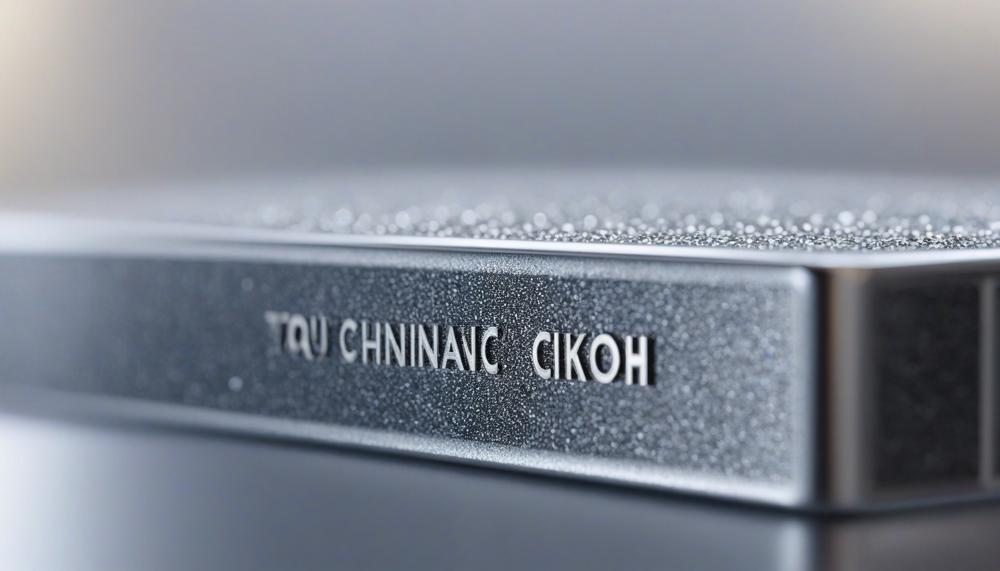
Silver solder, known for its high silver content and exceptional properties, stands out in the welding world, not just for its strength and durability but for its aesthetic qualities as well.
Let’s delve into the shiny finish and malleability of silver solder, showcasing how these features enhance its utility in welding tasks.
| Quality | Contribution to Aesthetics | Contribution to Functionality |
| Shiny Finish | Enhances visual appeal and seamless integration in decorative pieces | Reflects durability and corrosion resistance, ensuring long-lasting joins |
| Malleability | Allows for creative freedom in design, promoting intricate and detailed work | Facilitates easy adjustments and repairs, increasing the lifespan of the welded item |
In essence, the aesthetic qualities of silver solder contribute immensely to its appeal and functionality in welding.
Conclusion
Understanding silver solder is educational because it shows how important it is in many areas, from the fine art of jewelry making to the high demands of rocket engineering. For engineers, silver solder has to be strong and look good at the same time. It’s perfect for both. The wide range of uses for this metal shows how versatile it is, providing not only a bond but also a promise of longevity, conductivity, and good looks.
In the complicated dance of metals, silver solder comes out as a key player. It makes sure that every link not only stays strong, but also looks good and matches the craftsmanship. Silver solder has a special set of qualities that make it useful for many things, like making jewelry that will last for generations, making sure that water connections are safe, and making sure that computer parts work well. Its lower freezing point protects against damage, and its high strength and conductivity make sure it works for a long time. When art and technology come together, silver solder is the unsung hero who makes sure that the beauty doesn’t fade and the function doesn’t break.
It’s becoming clearer what part silver solder plays as we learn more about how modern production and fixing work. Making links isn’t enough; you need to make bonds that can stand the test of time and the elements while still keeping the end product’s character and appeal.
